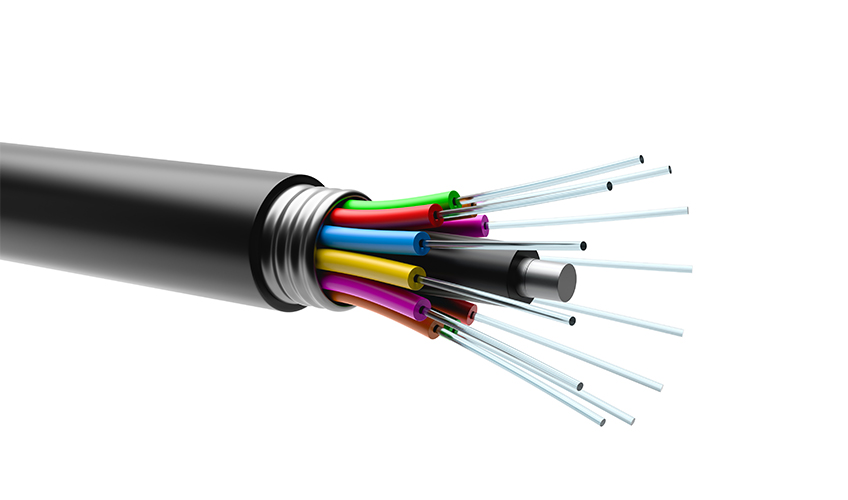
GPON Technology: Reasons Why Professionals Choose Fiber Optics
Be it sending emails, advertising products, or administering services online, communication is essential for any business. Fiber-optic cable is increasingly becoming the broadband connection of choice among businesses thanks to greater speed and reliability than Cable or DSL. Fiber-optical cables do not only have high bandwidth but are also quite secure since the signal can't be tapped by electromagnetic methods. Besides, the maintenance is low, and the thin cables can be packed densely, meaning they take up limited space.
When it comes to fiber optic cables, there are two broad options available: active optical networks (AON) and passive optical networks (PON). PON is further grouped into BPON (broadband passive optical network), GPON (gigabit passive optical network), and EPON (Ethernet passive optical network). GPON is a top choice among professionals thanks to its immense benefits, as documented in this blog.
GPON Explained
Gigabit Passive Optical Network (GPON) is a network technology based on the ITU-T G.984 standard. GPON can offer Gigabit transmission and reception speeds (or even with XGPON, 10 Gigabit) all via a single fiber optic cable that gives access to triple-play services i.e. Video, voice, and data. GPON can transmit data with speeds of up to 2.4 Gbps (downstream) and 1.2 Gbps (upstream) scalable to XGPON.
GPON technology has become very common in businesses and homes. In homes using fiber optics for internet access, GPON with an FTTH (Fiber to the Home) scheme is often used. In professional levels such as large offices and hotels, the FTTO (Fiber to the Outlet/Office) scheme is used with the GPON technology.
GPON Network Structure
In the GPON network structure, the optical fiber is installed in the building's central rack or equipment room. The fiber is linked to a PTRO or external entrance of F.O., then linked to an Optical Line Termination (OLT). The optical fiber is then linked to each of the NTOs in the areas to offer service. The Optical Distribution Network (ODN) is the network between the OLT and the ONT. ODN distribution is achieved with fiber cables, usually monomode, and divided by passive optical splitters. A final connection is then made from the ONT to the different equipment (computers, point of sales, televisions, telephones, etc.) using either analog telephony (POTS), traditional copper twisted-pair cable or video (CATV).
Why are Professionals Increasingly Choosing GPON? Benefits of GPON
As stated earlier, GPON is often preferred by professionals and homes to EPON and BPON. This is because it offers immense benefits, which include:
Speed
Professionals are increasingly looking for speed and therefore consider fiber optics which provides high-performance bandwidth of 5 gigabits per second (Gbps) downstream and 25 Gbps upstream. GPON can enable professionals to achieve impressive speeds with the ability to handle traffic up to 10/10 Gbs per subscriber and up to 40 Gbit/s throughputs for the entire optical network.
Secure Transmissions
Security is a top priority for enterprises looking for networking solutions. While fiber optic cables are entirely secure, security threats emerge from signal radiation beyond the cable and the possibilities of parallel channel phishing data. GPON networks are securely attributed to the isolated nature of the signals within the optic fibers. They are also impossible to hack or tap since they provide encryption, and data travels in a closed circuit.
Cost Saving
GPON network technology is not only surprisingly affordable but also allows you to cut operation costs. It's a passive system; therefore, it uses very little energy allowing you to cut on energy costs. It also doesn't require constant IT support, saving businesses incredible amounts of money. With a GPON network, you can save up to 35% of the investment cost.
Stability
GPON network technology is very stable and can always deliver a minimal bandwidth even in the busiest of times. It's pretty difficult for the network to experience downtimes or bottlenecks. The technology features advanced ODN splitters coupled with sufficient bandwidth preventing network congestion. It's excellent for real-time voice and video transmission, where stable connectivity is required for efficient transmission.
Compact and Lightweight
GPON fiber is compact, and lightweight-it's a fraction of the size of traditional copper cables. This means that you'll be able to save lots of space when installing the cabling in your building. Also, since GPON has an extended signal reach, you won't need to create room for signal-boosting equipment. You’ll only need fewer server rooms and equipment to sustain the network.
Final Thoughts
Enterprises are revamping their IT infrastructure by gradually leaving copper-based local area network (LAN) and RF transmission for GPON, thanks to its benefits. GPON has turned out a suitable choice for data and voice cabling. The immense benefits offered by GPON networks will indeed take your business a step forward. It could be the right time to move to GPON. Reach out to us at House of I.T for more info.
Recent Posts
- How Does GPON Improve Network Efficiency?
- What Are The Advantages Of GPON?
- What Are The Benefits Of IT Outsourcing?
- What's The Deal With Ransomware Attacks?
- Are GPON Providers Widely Available?
- What's GPON's Impact On Bandwidth?
- Why Is Multi-Factor Authentication Important?
- How To Ensure Data Privacy Compliance?
 Blogs
Blogs Infographics
Infographics Videos
Videos Podcasts
Podcasts Case Studies
Case Studies Call For Quote
Call For Quote